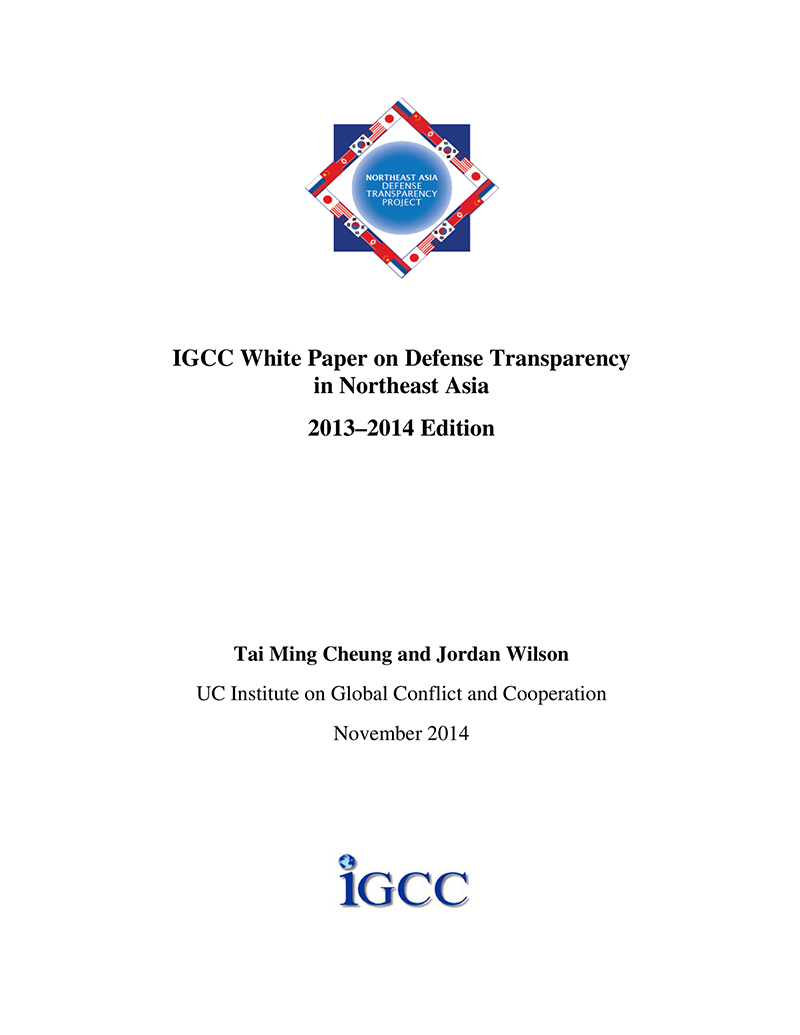2013‒14 IGCC White Paper on Defense Transparency in Northeast Asia
The 2013‒2014 Northeast Asia Defense Transparency Index (DTI) measures transparency in defense activities in one of the most strategically important but politically volatile regions of the world. In the fifth year of this Index, its central goal remains to provide a rigorous, quantitative-based measurement of this essential but contested concept.
Improving trust, confidence, and credibility in Northeast Asia’s security environment is becoming ever more pressing as arms competition intensifies among major regional powers and security interests become increasingly entangled. In this climate of growing security anxiety, the demand for timely and relevant defense information has grown, not only from governments and their militaries but also from many other quarters, including the general public, media, and business community. But while the case has been made by policy and academic experts that increased transparency could potentially meet some of these demands and strengthen mutual trust between states, defense transparency lacks agreed-upon definitions and standardized means of measurement. The Institute on Conflict and Cooperation (IGCC) has sought to address this analytical gap to provide a general framework for defining and measuring defense transparency, specifically for the six states covered in the DTI: the Democratic People’s Republic of Korea (DPRK), Japan, the People’s Republic of China (PRC), the Republic of Korea (ROK), the Russian Federation (Russia), and the United States.
The brief begins by presenting the methodology used by IGCC to initially develop the DTI, then highlights changes made to improve the process in this latest edition. This is followed by the final scores achieved by states in the 2013–2014 DTI, which are compared with previous years. The Analysis section examines what brought about scoring changes for these states from the previous editions of the index. Finally, the Country Assessments and Recommendations section summarizes trends for each of the six countries.
By taking a comprehensive approach to defense transparency and continuing to refine our methodology, we want to ensure that the DTI will remain an informative, relevant and adaptive tool for measuring defense transparency going forward, enabling comparison both across states and over time.
